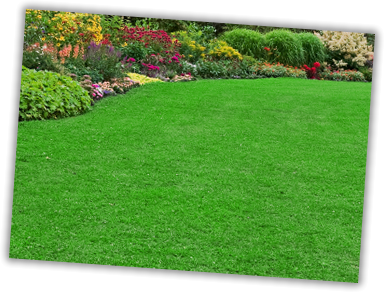The Grass Is Always Greener Converting a Bermuda lawn to St. Augustine
How, exactly and why more importantly, would you change your lawn from Bermuda grass to St. Augustine? Reasons range from just wanting a new look, necessity due to shade from growing trees and landscapes over the years, even allergies to Bermuda grass.
LAWNS IN FULL SUN
In full sun situations, the transition will be the quickest. Most grasses are sun-loving and St. Augustine is no exception. Its broad leaf blades shade Bermuda grass when competing for the same space.
To start the process in full-sun areas, treat the Bermuda grass with systemic glyphosate products. This will kill most of Bermuda. When the treated area has browned, usually 10 to 14 days set the mower on its lowest setting and make a pass over the lawn. Bag all the grass clippings.
Next, prepare the soil by lightly tilling or using a verticutter or de-thatching machine, which loosens the soil with vertical knives. This is also an excellent time to level your lawn by filling in depressed areas with screened topsoil and lowering raised areas or high spots.
Be prepared to install the St. Augustine sod as soon as it is delivered. Keep the new plantings moist, but not wet. This means watering once or twice daily for short periods of time until the new sod roots into the soil. Once rooting has occurred, reduce the number of days you water while increasing the duration each time until you gradually reach the usual program for your lawn’s needs. This is generally about an inch a week.
Anytime after the third mowing, fertilize the new sod with one-half the normal rate of fertilizer. St. Augustine grass lawns do not require as much feeding as Bermuda: twice a year on April 15th and September 15th or three times a year, April 15th, June 1st, and September 15th. While the new St. Augustine grass is establishing its root system, avoid pre-emergent applications for at least six months.
AREAS IN PARTIAL OR FULL SHADE
In areas with partial shade where the lawn is exposed to at least 4 hours of sunlight and the Bermuda grass is already thin, a process known as plugging can be utilized since the Bermuda grass competition will be minimal. This process involves using a spade to physically remove the existing grass and soil and replacing it with small “plugs” of the new St. Augustine grass. Plugs can range in size from 4 inches to any part of a standard size piece of sod, including installing the size in a checkerboard pattern.
This method can also be used in full sun, with the understanding that it will need time to completely fill in space.
Solid sodding the St. Augustine in a partial shade situation is also an option. The instructions for water, fertilizer, and pre-emergent remain the same as above.
Locations receiving less than 4 hours of sunlight would be best served by ending the frustration of trying to maintain turf grass. Instead, consider one of the many available ground covers that perform well in heavier shade environments.
Lastly, I would advise you not to fight MOTHER NATURE, (She is undefeated!!)
When your light conditions change over the years to less than full sun make the change and let her be your friend!

